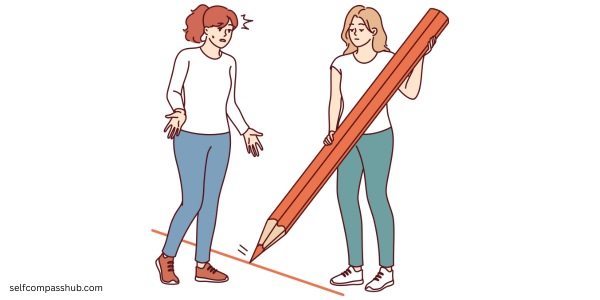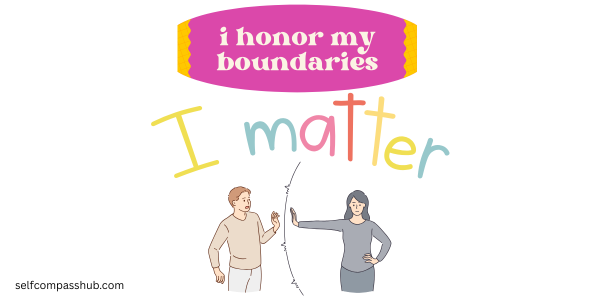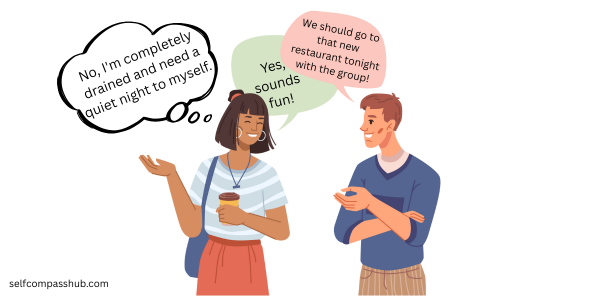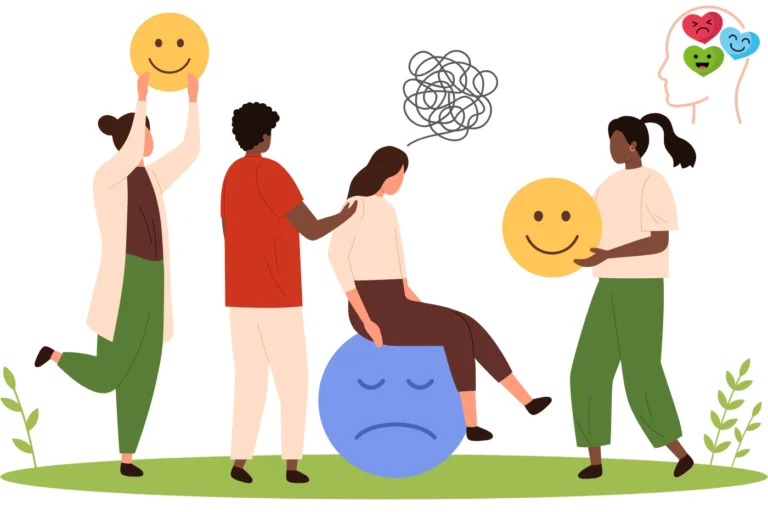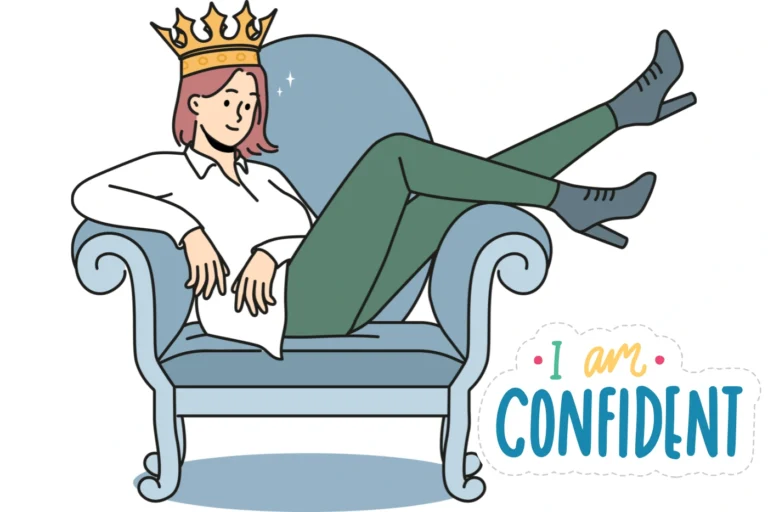Healthy boundaries form the foundation of balanced, respectful relationships.
Whether with partners, family members, friends, or colleagues, establishing clear boundaries helps protect your emotional wellbeing while fostering deeper connection.
This post explores what boundaries are, why they matter, and how to set and maintain them effectively.
What Are Boundaries?
Boundaries are the invisible lines that define where you end and others begin. They encompass your physical space, emotions, time, energy, values, and personal needs.
Boundaries aren’t walls meant to keep people out – they’re guidelines that teach others how to treat you and what you’re comfortable with.
Think of boundaries as the property lines around your emotional home. They show:
- What you’ll accept from others
- How you expect to be treated
- Which behaviors cross the line
- When your limits have been reached
Signs You Need Better Boundaries
You might need to strengthen your boundaries if you experience:
- Feeling resentful or angry frequently
- Saying “yes” when you want to say “no”
- Consistently putting others’ needs before your own
- Feeling responsible for others’ emotions
- Avoiding expressing your true feelings
- Experiencing emotional exhaustion
- Allowing disrespectful treatment
- Feeling like your identity is tied to others’ approval
Types of Boundaries
Physical Boundaries
These involve your personal space, privacy, and body. Examples include consent for physical touch, comfort with personal space, and privacy needs.
Emotional Boundaries
These protect your feelings and emotional energy. They include sharing appropriate levels of personal information, not taking responsibility for others’ feelings, and expressing your emotions effectively.
Time Boundaries
These involve how you allocate your time and energy. Setting time boundaries means recognizing your limits and not overcommitting.
Digital Boundaries
In today’s connected world, these boundaries relate to online communication expectations, social media interactions, and digital privacy.
Material Boundaries
These involve your possessions, money, and resources – what you’re willing to share and under what conditions.
How to Set Healthy Boundaries
1. Self-awareness is the first step
Reflect on your feelings, needs, and limits. Journal about situations where you feel uncomfortable or resentful – these often indicate boundary violations.
2. Start small
Begin setting boundaries in less challenging relationships before tackling more difficult ones.
3. Be direct, clear, and specific
Vague boundaries are easy to misinterpret. Instead of “I need space,” try “I need 30 minutes of alone time when I first get home from work.”
4. Use “I” statements
Frame boundaries in terms of your needs rather than criticizing others: “I feel overwhelmed when I receive work calls after 7pm” rather than “You call me too much after work.”
5. Expect resistance
When you begin setting boundaries, some people may push back. This doesn’t mean your boundaries are wrong – it often confirms they’re necessary.
6. Be consistent
Enforcing boundaries consistently helps others learn to respect them.
7. Practice saying “no”
“No” is a complete sentence! You don’t always need to explain or justify your boundaries.
Common Boundary Challenges
Guilt and fear
Many people worry that setting boundaries makes them selfish. Remember: boundaries create healthier relationships for everyone involved.
Cultural and family expectations
Some families or cultures may not emphasize personal boundaries. Find respectful ways to honor your background while protecting your wellbeing.
Past relationship patterns
If you’ve previously allowed boundary violations, changing patterns takes time and patience.
How Healthy Boundaries Benefit Relationships
When both people maintain healthy boundaries, relationships flourish through:
- Increased trust: Clear boundaries create predictability and safety
- Better communication: Understanding each other’s needs leads to fewer conflicts
- Mutual respect: Honoring boundaries demonstrates care for each other
- Emotional balance: Neither person becomes overly dependent or responsible for the other
- Deeper intimacy: True closeness develops when both people feel secure and respected
When Boundaries Are Crossed
- Calmly restate your boundary: “As I mentioned before, I need advance notice before visitors come over.”
- Explain consequences: “If you continue to show up unannounced, I won’t be able to welcome you in.”
- Follow through: Consistency is key to teaching others your boundaries matter.
- Consider the pattern: Occasional mistakes differ from repeated violations. The latter may require reevaluating the relationship.
Conclusion
Setting and maintaining healthy boundaries isn’t selfish – it’s an act of self-respect that allows you to show up fully in your relationships.
When you honor your own needs and limits while respecting those of others, you create the foundation for relationships built on mutual respect, trust, and emotional balance.
Remember that boundary-setting is a skill that improves with practice. Be patient with yourself as you learn to recognize, communicate, and enforce your boundaries.
The result will be more authentic connections and a greater sense of personal wellbeing.
Reflection Questions
- Which areas of your life need clearer boundaries?
- What makes setting boundaries difficult for you?
- How might your relationships improve with healthier boundaries?
- What’s one boundary you can begin establishing today?

